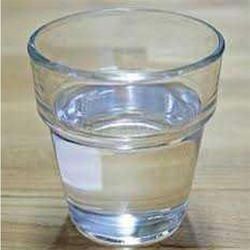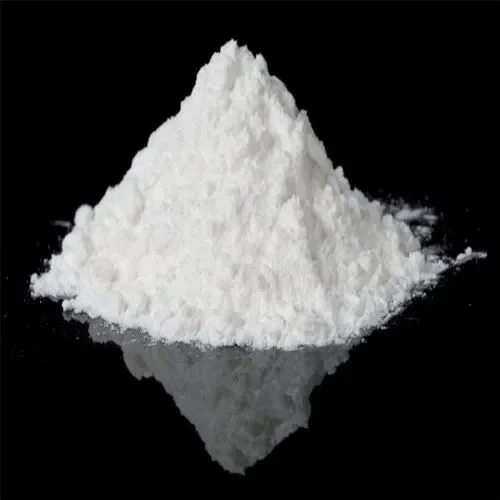Welcome to Our Company
Triethanolamine Liquid
Product Details:
- Application Industrial
- Physical Form Liquid
- Ph Level 10 to 12 in a 1% aqueous solution
- Storage Room Temperature
- Grade Technical Grade
- Melting Point 21 degree centigrade
- Molecular Weight 149.19 Grams (g)
- Click to View more
X
Triethanolamine Liquid Price And Quantity
- 1 Kilograms
Triethanolamine Liquid Product Specifications
- Room Temperature
- 10 to 12 in a 1% aqueous solution
- Technical Grade
- Liquid
- Industrial
- C6H15NO3
- Water Soluble
- 1.124 Gram per cubic centimeter(g/cm3)
- 149.19 Grams (g)
- 98%
- 21 degree centigrade
Product Description
Triethanolamine Liquid is accessible in clear, colorless liquid form. Transparent in appearance, this chemical is used as suitable ingredient to formulate herbicide, cement additive, compound for corrosion resistance substance, textile grade chemical and surface active agent to name a few. It is hygroscopic by content and it smells like liquid ammonium. Offered chemical is also used to produce dyes and solvents to enhance permeability of organic fluids into paper and wood. Application of this chemical can also be noticed in the formulation of ointments, creams and shampoos where it is used as suitable emulsifying and neutralizing agent.
Uses of Triethanolamine:
Triethanolamine (TEA) is a versatile chemical compound that finds numerous applications across various industries. It is formed by the reaction of ethylene oxide with ammonia and ethylene glycol. Some common uses of triethanolamine include:
1. Cosmetics and Personal Care Products: TEA is utilized in the formulation of cosmetics and personal care items, such as moisturizers, shampoos, conditioners, soaps, and facial cleansers. It acts as an emulsifier, pH adjuster, and buffering agent.
2. Surfactants and Detergents: Triethanolamine is used as an emulsifying agent and stabilizer in the production of detergents and surfactants, which are essential components in many cleaning products.
3. Textile Industry: TEA is employed in textile processing to enhance dyeing and printing. It helps in the dissolution of dyes and pigments and serves as a pH regulator during the process.
4. Metalworking Fluids: Triethanolamine is utilized in metalworking fluids as a corrosion inhibitor and pH balancer, helping to protect metal surfaces during machining and other industrial processes.
5. Concrete Admixtures: In the construction industry, TEA is used as a cement grinding aid and concrete admixture, which improves the workability and strength of the concrete mix.
6. Pharmaceuticals: Triethanolamine is sometimes used in the preparation of certain medications and topical formulations due to its solubility and emulsifying properties.
7. Gas Treatment: In natural gas processing, TEA is used to remove acidic gases like carbon dioxide and hydrogen sulfide.
8. Pesticides: Triethanolamine can be found in some pesticide formulations, assisting in the even distribution and application of active ingredients.
9. Inks and Printing: It is used in printing inks to enhance pigment dispersion and prevent clogging in the printing process.
10. Electroplating: Triethanolamine is used in electroplating ba ths to improve the brightness and uniformity of the deposited metal.
11. Rubber Industry: TEA can be utilized in the production of rubber to aid in dispersion and processing.
It's important to note that while triethanolamine has many industrial applications, it should be handled with care as it can cause skin and eye irritation and should be used in controlled and appropriate concentrations. Additionally, in certain applications and formulations, it has been subject to scrutiny regarding potential health and environmental concerns, so it is essential to follow safety guidelines and regulations when using this compound.
Triethanolamine Properties:
Triethanolamine (TEA) is a colorless, viscous liquid with a distinct amine odor. Its properties make it a useful compound for various industrial applications. Here are some key properties of triethanolamine:
1. Chemical Formula: C6H15NO3
2. Molecular Weight: 149.19 g/mol
3. Physical State: Liquid at room temperature
4. Odor: Amine-like odor
5. Solubility: Soluble in water and most polar organic solvents
6. Density: Approximately 1.124 g/cm3
7. Melting Point: Approximately 21 degree centigrade
8. Boiling Point: Approximately 335 degree centigrade
9. pH: Basic (alkaline) in water due to its weakly basic amine character; pH typically ranges from 10 to 12 in a 1% aqueous solution.
10. Reactivity: Triethanolamine is reactive with acids to form sal ts and with acylating agents to form amides.
11. Viscosity: It is a relatively viscous liquid, which contributes to its emulsifying and stabilizing properties.
12. Hygroscopic: TEA absorbs moisture from the air, which can affect its handling and storage.
Some additional points to consider:
1. Triethanolamine is hygroscopic, meaning it readily absorbs moisture from the surrounding environment. Therefore, it should be stored in tightly sealed containers to prevent degradation and maintain its properties.
2. When handling triethanolamine, proper safety precautions should be followed, including the use of personal protective equipment (PPE) such as gloves and eye protection, as it can cause skin and eye irritation.
In summary, triethanolamine's physical and chemical properties, including its solubility, reactivity, and alkaline nature, make it a valuable additive in various industries such as cosmetics, detergents, textiles, metalworking, and construction. However, due to its potential hazards, it should be handled with care and in accordance with safety guidelines.
FAQ:
1. What is Triethanolamine (TEA)?
Ans: Triethanolamine is a chemical compound with the formula C6H15NO3. It is a viscous liquid with a distinct amine odor. TEA is commonly used in various industries for its emulsifying, pH-balancing, and buffering properties.
2. What are the common uses of Triethanolamine?
Ans: TEA finds applications in cosmetics, personal care products, detergents, textile processing, metalworking fluids, concrete admixtures, pharmaceuticals, gas treatment, pesticides, printing inks, electroplating, and rubber production.
3. Is Triethanolamine safe to use in cosmetics and personal care products?
Ans: TEA is considered safe for use in cosmetics and personal care products when used in appropriate concentrations and within regulatory guidelines. However, it is important to follow safety instructions and perform patch tests to avoid skin and eye irritation.
4. What are the potential risks associated with Triethanolamine?
Ans: TEA can cause skin and eye irritation upon direct contact. It can also be harmful if ingested or inhaled in large quantities. Care should be taken when handling and storing this chemical, and proper safety precautions should be followed.
5. Can Triethanolamine be used in food products?
Ans: No, Triethanolamine is not approved for use in food products. It is mainly used in non-food industrial applications.
6. Is Triethanolamine environmentally friendly?
Ans: TEA has some environmental concerns, particularly when released into the environment in large quantities. It can have adverse effects on aquatic organisms and may contribute to water pollution. Proper disposal and handling are important to minimize its environmental impact.
7. Can Triethanolamine react with other chemicals?
Ans: Yes, Triethanolamine can react with acids to form sal ts and with acylating agents to form amides. It is essential to consider its reactivity when formulating products or handling it in chemical processes.
8. How should Triethanolamine be stored?
Ans: TEA should be stored in tightly sealed containers away from direct sunlight and heat sources. It is hygroscopic, so it should be kept in a dry environment to prevent degradation.
9. Is Triethanolamine regulated?
Ans: Yes, Triethanolamine is regulated in many countries due to its potential health and environmental impacts. Regulatory bodies such as the US Food and Drug Administration (FDA) and the European Chemicals Agency (ECHA) have guidelines and restrictions on its use in various applications.
10. Can Triethanolamine be used in combination with other chemicals?
Ans: Yes, TEA is often used in combination with other chemicals to enhance its properties or achieve specific results in various applications. However, proper compatibility and formulation considerations should be taken into account to ensure product stability and safety.
Tell us about your requirement

Price:
Quantity
Select Unit
- 50
- 100
- 200
- 250
- 500
- 1000+
Additional detail
Mobile number
Email









